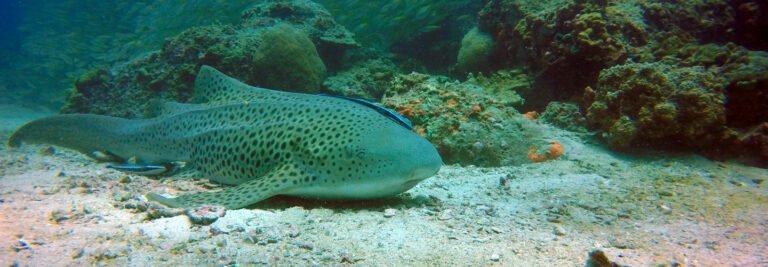Welcome to the mesmerizing underwater realm of Koh Phi Phi, Thailand, where the vibrant marine life never fails to astonish divers. Among the fascinating creatures that adorn the coral reefs and rocky shores of Phi Phi are the enchanting nudibranchs. These captivating sea slugs, found in abundance during macro dives, add a splash of color to the underwater landscape, making every dive an unforgettable experience.
Nudibranchs of Thailand: A Key Feature of Macro Dives
Nudibranchs are among the key highlights of macro dives on Koh Phi Phi. These diverse sea slugs, known for their striking colors and intricate patterns, are a testament to the rich biodiversity of Thailand’s underwater world. As divers explore the coral reefs and sandy bottoms of Phi Phi, they’ll encounter an array of nudibranch species, each more fascinating than the last.
Habitat and Diet
To spot nudibranchs in their natural habitat, divers must first locate their food sources. These sea slugs thrive in various marine environments around Koh Phi Phi, from coral reefs teeming with life to rocky outcrops and sandy patches. Their diet consists mainly of sponges, and hydroids (related to corals , making them an essential part of the underwater ecosystem.
Featured Nudibranchs of Thailand:
Doriprismatica atromarginata
- Size: From 1cm-6cm
- Diet: Feeds primarily on sponges.
- Ease of Spotting: [2] (1 being very hard and unusual to spot, 5 being very easy and abundant).
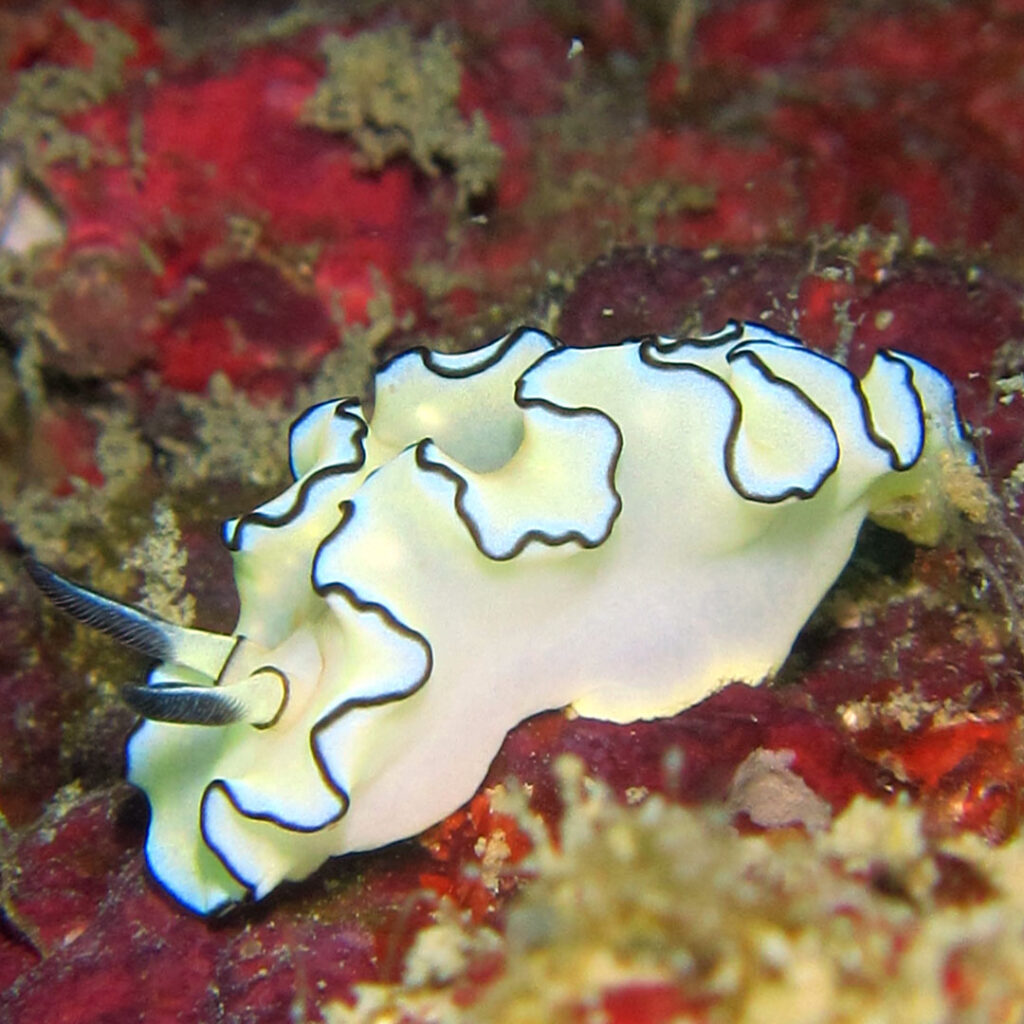
Jorunna funebris
- Size: From 1cm-6cm
- Diet: Feeds primarily on sponges.
- Ease of Spotting: [1] (1 being very hard and unusual to spot, 5 being very easy and abundant).
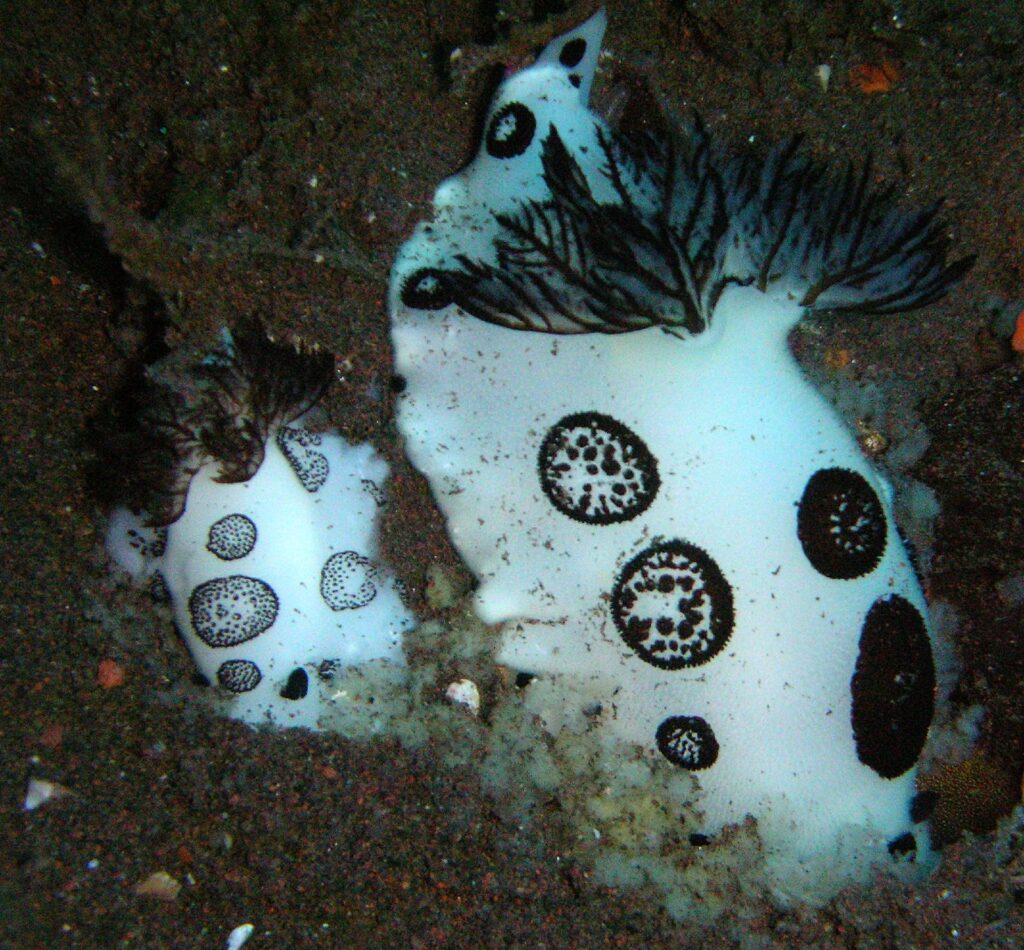
Glosodoris Cincta
- Size: From 6cm
- Diet: Feeds primarily on sponges.
- Ease of Spotting: [2] (1 being very hard and unusual to spot, 5 being very easy and abundant).

Goniobranchus fidelis
- Size: From 0,5cm – 2cm
- Diet: Feeds primarily on sponges.
- Ease of Spotting: [2] (1 being very hard and unusual to spot, 5 being very easy and abundant).
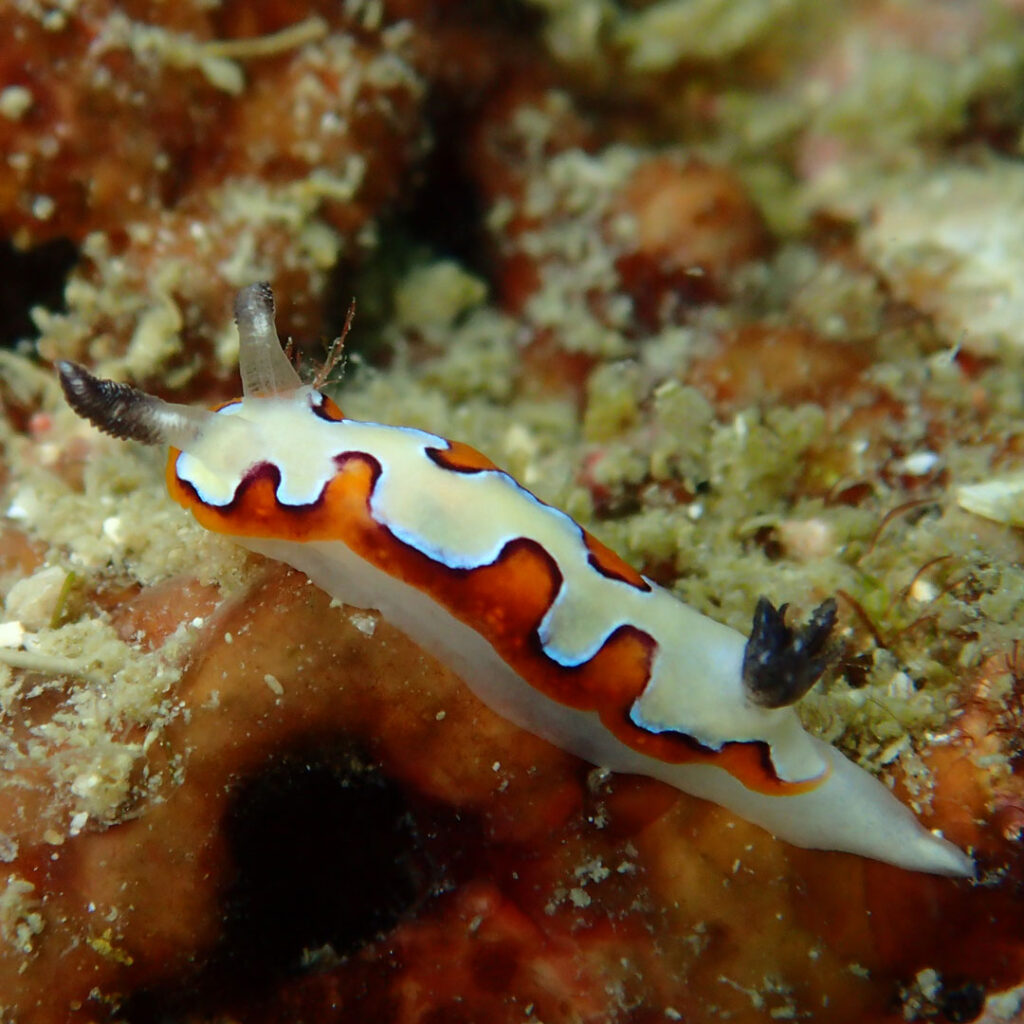
Gonibranchus Geminus
- Size: From 1cm – 5cm
- Diet: Feeds primarily on sponges.
- Ease of Spotting: [3] (1 being very hard and unusual to spot, 5 being very easy and abundant).
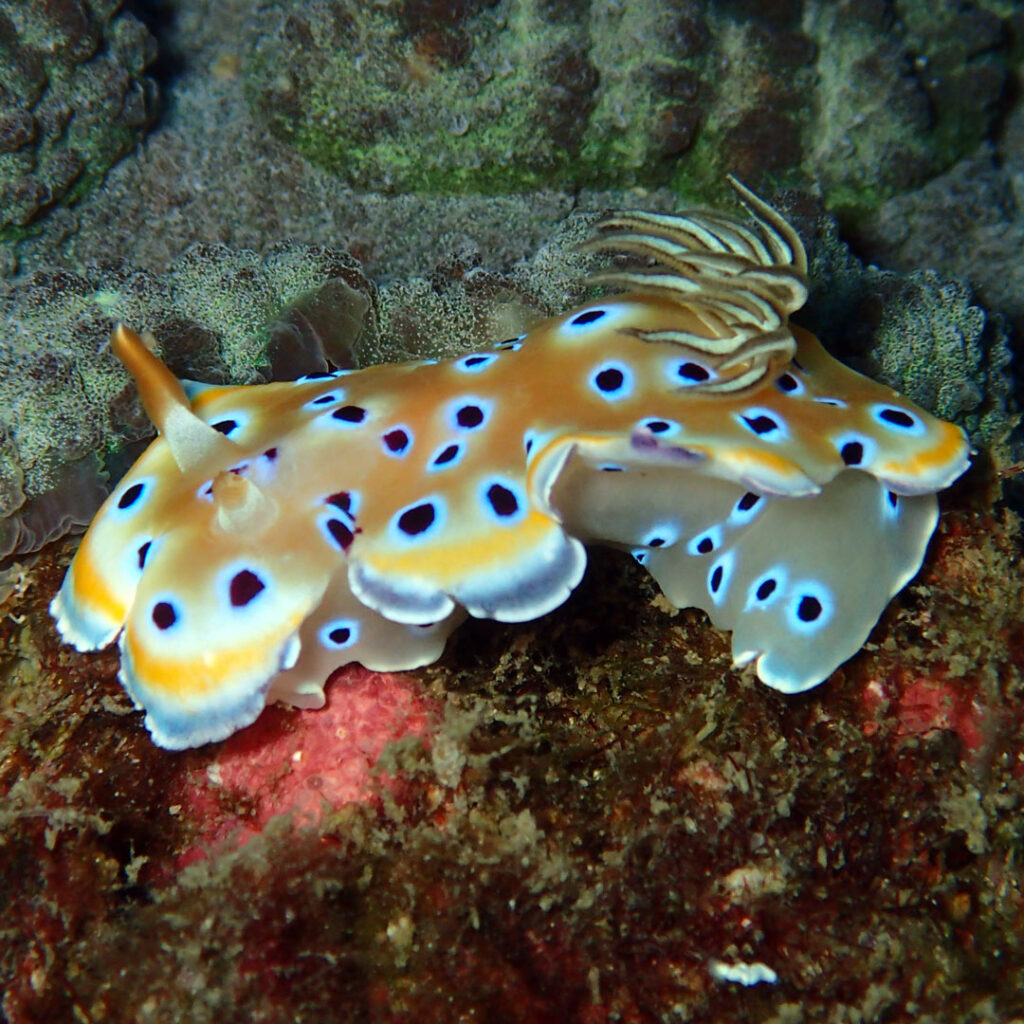
Dermatobranchus ornatus
- Size: From 6cm
- Diet: Feeds primarily on gorgonian soft corals.
- Ease of Spotting: [3] (1 being very hard and unusual to spot, 5 being very easy and abundant).
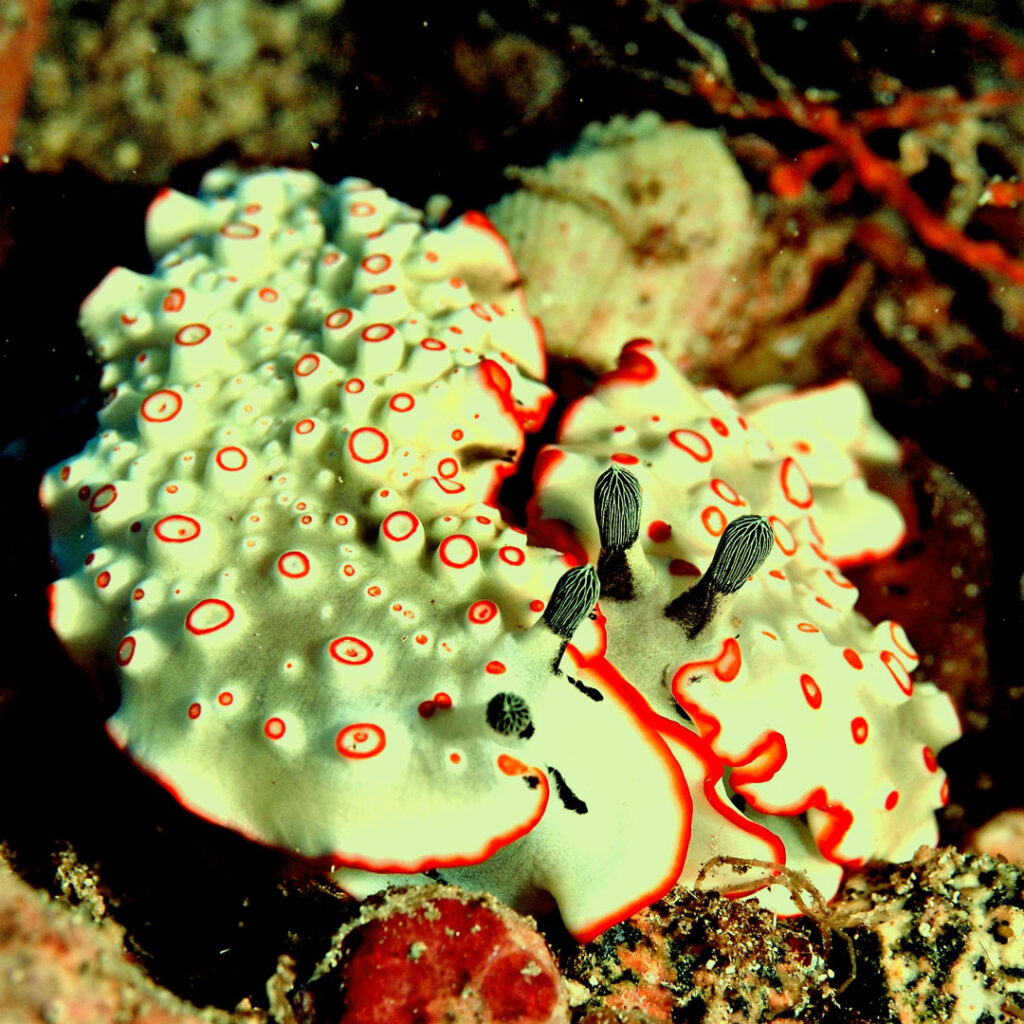
Halgerda indotessellata
- Size: up to 5cm
- Diet: Feeds primarily on sponges.
- Ease of Spotting: [2] (1 being very hard and unusual to spot, 5 being very easy and abundant).

Halgerda stricklandi
- Size: up to 10cm
- Diet: Feeds primarily on sponges.
- Ease of Spotting: [3] (1 being very hard and unusual to spot, 5 being very easy and abundant).
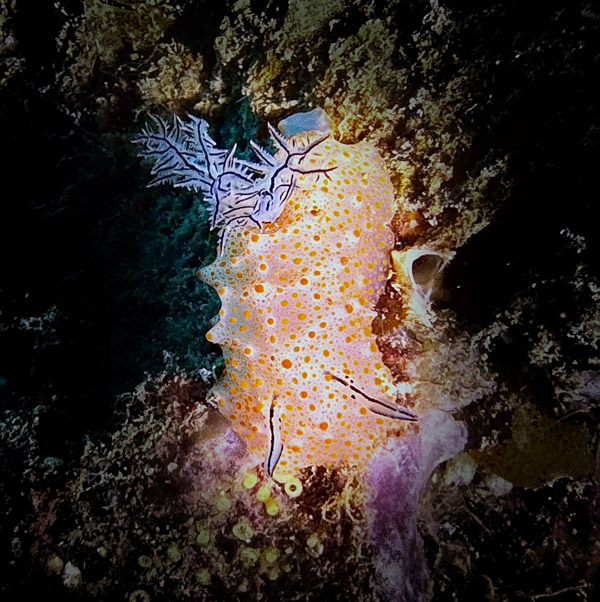
Halgerda bacalusia
- Size: up to 10cm
- Diet: Feeds primarily on sponges.
- Ease of Spotting: [3] (1 being very hard and unusual to spot, 5 being very easy and abundant).
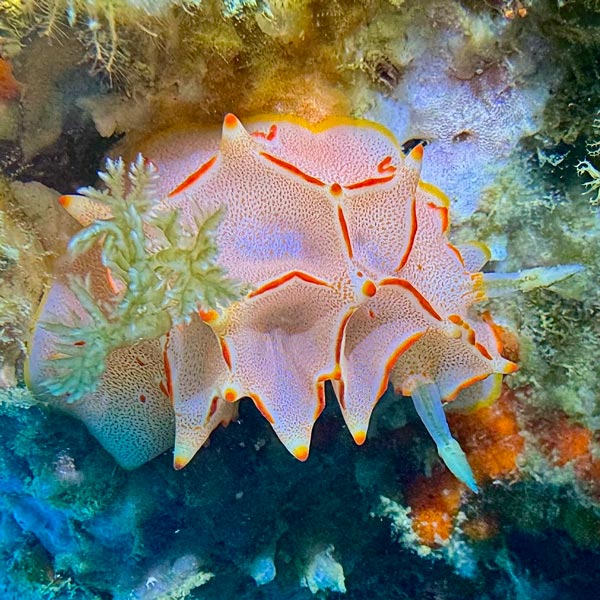
Phyllidiella Zeylancia
- Size: up to 4.5cm
- Diet: Feeds primarily on sponges.
- Ease of Spotting: [5] (1 being very hard and unusual to spot, 5 being very easy and abundant).
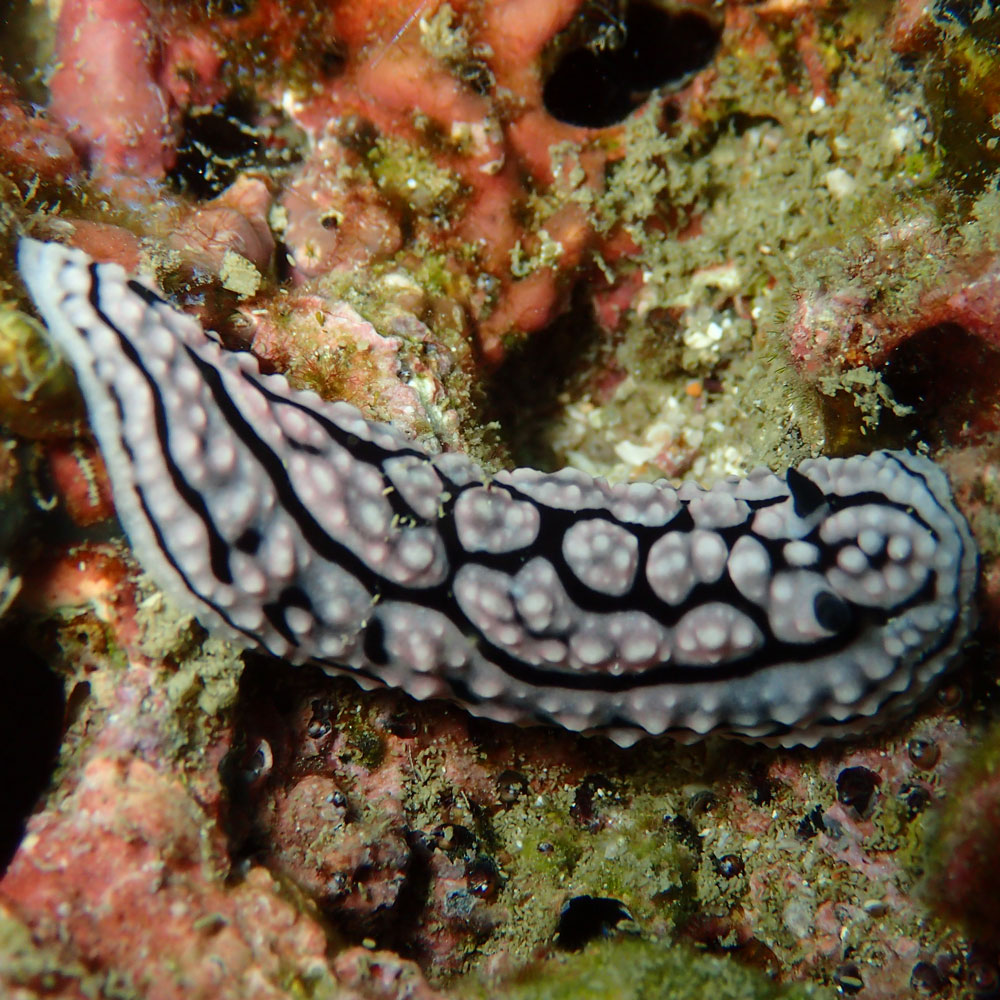
Phyllidia elegans
- Size: up to 10cm
- Diet: Feeds primarily on sponges.
- Ease of Spotting: [5] (1 being very hard and unusual to spot, 5 being very easy and abundant).

Trinchesia Sibogae
- Size: up to 3.5cm
- Diet: arborescent hydroids of the Sertularella genus.
- Ease of Spotting: [2] (1 being very hard and unusual to spot, 5 being very easy and abundant).
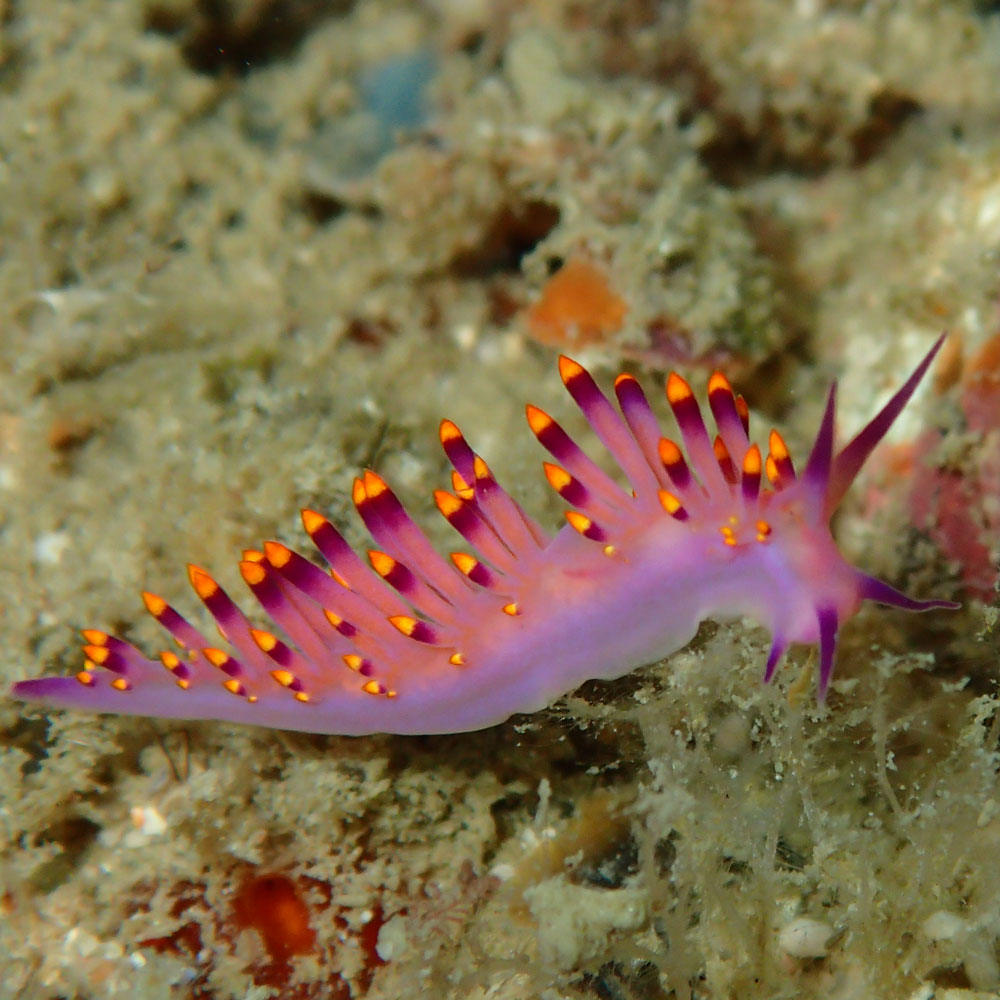
Ceratosoma trilobatum
- Size: up to 12cm
- Diet: Feeds mainly on sponges.
- Ease of Spotting: [3] (1 being very hard and unusual to spot, 5 being very easy and abundant).
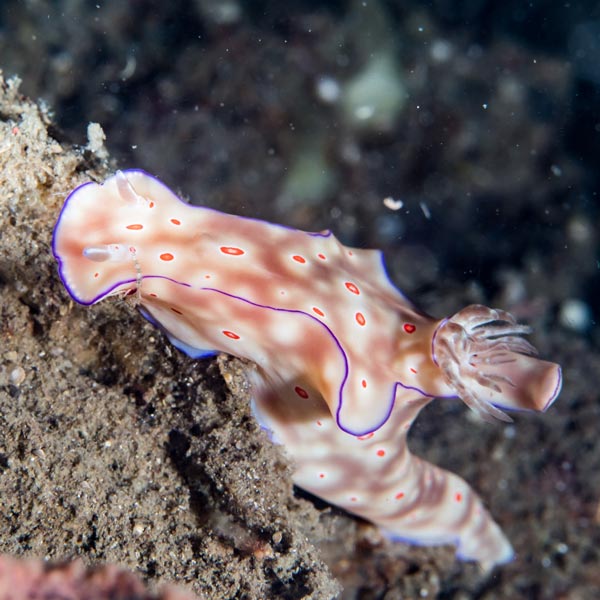
Hypselodoris pulchella
- Size: up to 8cm and 11cm
- Diet: Feeds primarily on sponges.
- Ease of Spotting: [3] (1 being very hard and unusual to spot, 5 being very easy and abundant).

Samla bicolor (complex)
- Size: up to 2cm
- Diet: Feeds primarily on hydroids polyps.
- Ease of Spotting: [1] (1 being very hard and unusual to spot, 5 being very easy and abundant).
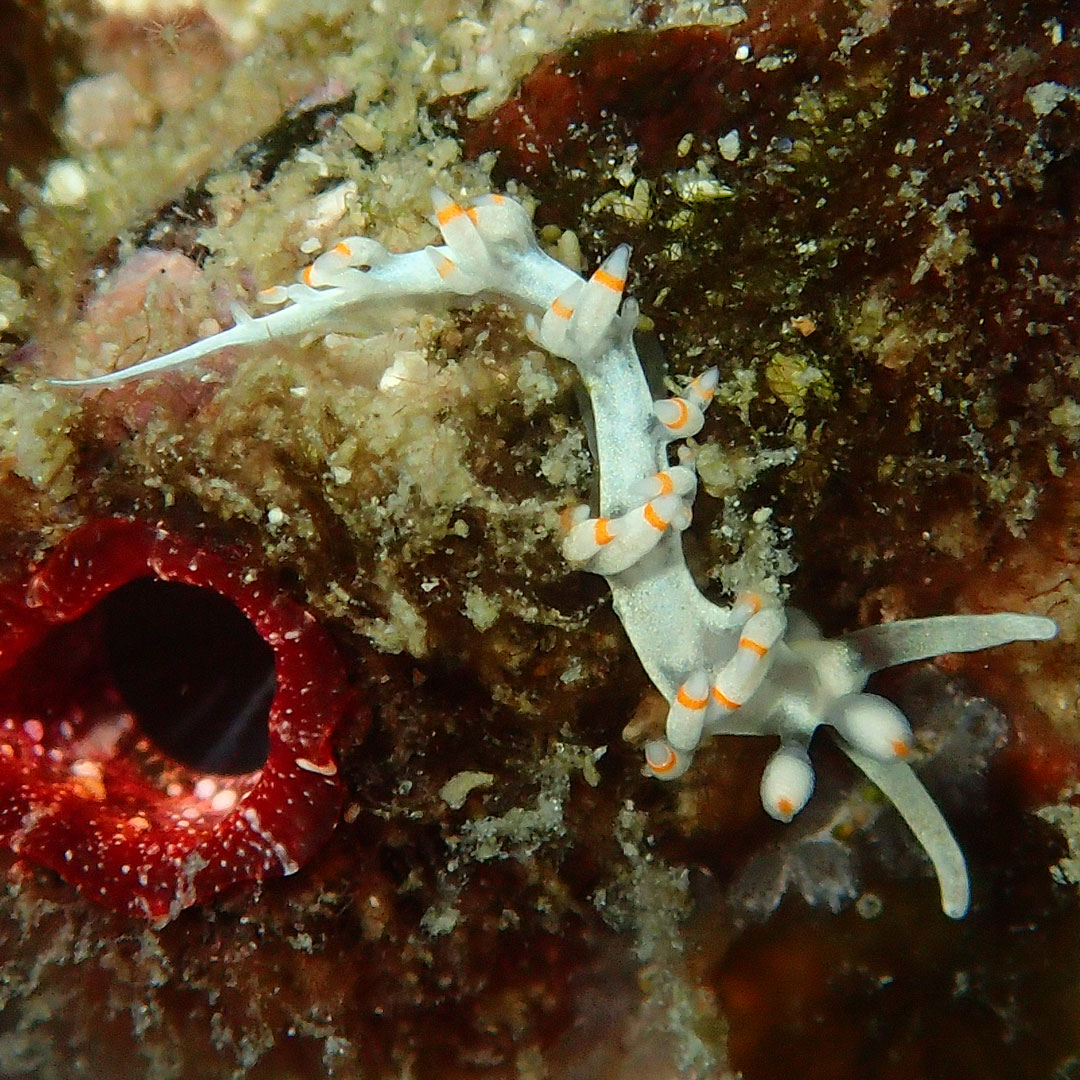
Hypselodoris apolegma
- Size: up to 10cm
- Diet: Feeds primarily on sponges.
- Ease of Spotting: [1] (1 being very hard and unusual to spot, 5 being very easy and abundant).
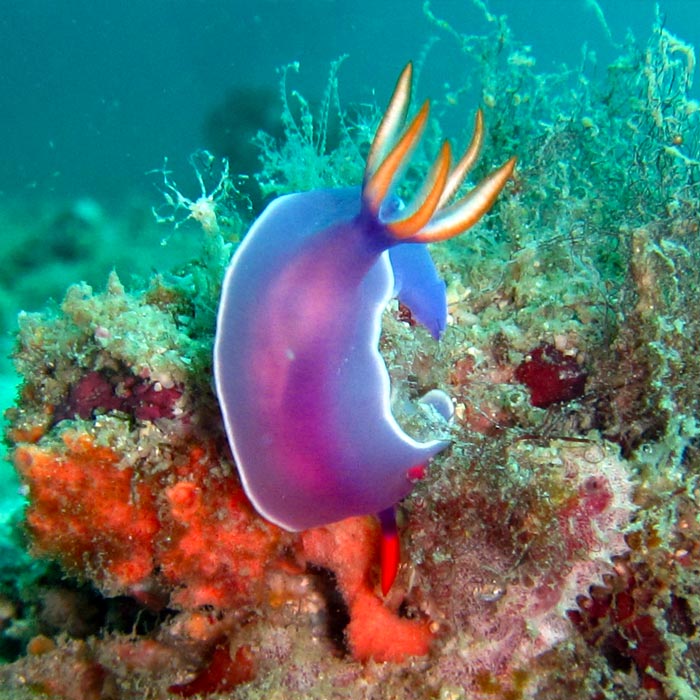
Experience the wonders of Koh Phi Phi’s underwater world and discover the beauty of nudibranchs on a macro dive with Black Tip Scuba. Our expert guides will lead you on an unforgettable journey through the colorful reefs and sandy expanses of Phi Phi, where you’ll encounter these mesmerizing sea slugs in their natural habitat. Book your macro diving adventure with us today and immerse yourself in the vibrant marine life of Koh Phi Phi.
